
by Andrew Bowman |
|
If you’re like most Americans, you have a VCR. Specifically
you have a VHS format VCR and if you’re like me, a huge
collection of pre-recorded movies and tapes of your favorite
television shows. A problem the big networks have been facing
will soon be yours. Videotape doesn’t last forever.
Turn Your Old Video Tapes Into Digital Video - Click Here Now!
|
|
|
Lessons From the Past |
|
Ampex invented the first practical video tape recorder in
1956. Bing Crosby is said to have funded Ampex to push the
technology forward so he didn’t have to do his show twice-- once
live on the East coast and then again 3 hours later live for the
west coast and so he didn’t have to record it on wax disc. You
may think of videotape as cassettes but the first machines were
reel to reel. A great many television shows were recorded live
on tape so they only had to be performed once. Programs such as
game shows certainly couldn’t have the contestants play again
and big stars on variety shows like Ed Sullivan had busy
schedules.
Over time these reels of tape
began to build up. Late innovations in tape began to take up
less space. Machines got smaller. One-inch helical scan
replaced two-inch quad. U-matic, sometimes called the
grandfather of VHS, revolutionized news broadcasts with the
ultra portability of a videotape cassette. The television
networks recorded so much. Then they tossed it in the trash.
It took up too much room. To make matters worse, what they
saved fell apart.
Click Here to "Go Digital" now
|
|
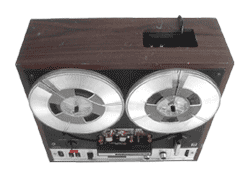
". . . the first machines were reel to reel."
|
That’s why you won’t see a
lot of classic television shows ever again. Though you’ve
probably bought a DVD player you own a VHS machine and so have
inherited both storage space problems and if it hasn’t
happened already, tape decay. You can act and solve both
problems at once. You stepped into the digital age when you
bought a DVD player. The studios have too. When you see the
best of Ed Sullivan or any old TV show advertised, you almost
always hear the words “digitally remastered.”. New releases of
old music also gets this moniker. Both industries have gone
digital. So should you.
|
|
Tape Decay - Dust to Dust |
Videotape, most simply described, is iron dust glued to
plastic ribbon. When exposed to a magnetic field, parts of the
iron or other material are partially magnetized. The magnetic
patterns are used to encode information. Because the ribbon is
magnetized to a small degree, sensitive electronics can read the
changes in strength and then translate that back to sound and
picture. The binders that hold the powder coating begin to lose
its stickiness. The tape comes apart. Picture and sound become
dust.
It’s not as if your videotapes turn to trash. It’s when. Just
when videotape fails depends on the tape formulation and how
it’s stored. Experts give the general number of six to 60 years,
the latter only true if videotapes are stored in special climate
controlled archival storerooms. Ten to twelve years is the
Turn Your Old Tapes Into Digital Video - Click Here Now!
|
accepted average. VHS, however, has been around since 1977.
That’s 26 years of video tapes though for most of us, and its
only been ten to twelve years since the home VCR really took off
and we started our collections. Some of your prize videos are on
the edge of self-destruction. Fortunately the DVD player has
come along to save us.
|
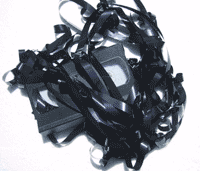
". . . iron dust glued to plastic ribbon."
|
|
|
Digitally Remastered - New Life |
The DVD player is the fastest selling consumer entertainment
product on the planet, entering into millions of new homes every
year in North America alone. DVD’s are smaller than VHS tapes
and take up less room on your shelf. If properly handled they
will still be around even when the format is long dead.
|
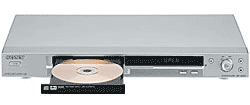
". . . the fastest selling consumer entertainment
product on the planet . . ."
|
Turn Your Old Tapes Into Digital Video - Click Here Now!
Another device spreading
rapidly to over half the households in the US and Canada is
the home computer. Like the DVD player, it is a digital
device. People are already using it to
make copies of regular DVD’s but did you know you could
use it to backup all your videotapes as well? It’s true. And
if you have a computer and a DVD player you have almost
everything you need to digitally re-master all your home
movies.
Unlike the first VCR’s,
computers and DVD players do not come with built in video
recording capabilities. The first home VCR’s cost over a
thousand dollars and so did the first video capture devices
for PC’s. Like everything else in the high-tech world, the
price has come down. For under a hundred dollars you can own
an add-on TV Capture card like the AverTV Desktop Personal
Recorder or the
ATI TV Wonder VE cards.
Get an ATI TV Wonder Card - Click Here Now!
|
Expert Guides, the leader in proven, simple solutions for
complex home-computing questions has written easy to use guides
that anyone can use in creating backups of their own videotapes.
Learn how to create copies of your old home movies and favorite
features on inexpensive recordable CD’s that will play on nearly
any DVD player. They can show you how to turn them into real
DVD’s and even ultra-compact high quality DivX and Windows Media
Video files which new generations of DVD players will also play.
|
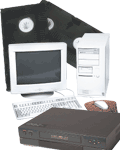
". . .digitally re-master all your home movies."
|
The future truly is digital.
Home DVD recorder devices are already in stores but with price
tags of $600 and up and a basic inability to record discs that
will playback in most normal DVD players, home DVD recorders
are a poor and expensive choice for archiving your tapes.
Though immensely popular, the TiVO records video on a built in
hard drive that is all but inaccessible to the most advanced
digital video geeks. Further, TiVO gives you limited recording
space with the inability to take the media with you or add
more space. Computer TV capture devices like the
ATI TV Wonder and AverMedia AverTV Stereo give you the
flexibility you need.
Click
Here To Learn To Transfer Your Video Tapes to Digital Video
|
|
Not Just for VHS |
|
In the past 30 years there have been a great many
developments in video technology for the home user. Betamax
format VCR’s came out two years before VHS and despite its
higher picture quality they had vanished by the mid-80’s. 1978
marked the birth of Laserdisc-- virtually dead by the mid-90’s.
JVC improved VHS to make the higher video and audio quality
Super-VHS format but it never caught on. Camcorders became
smaller with the invention of 8mm video tape and then the
superior Hi-8 format. These formats all decay-- even Laserdisc,
if handled too much.
Expert Guides can show the owners of any of these formats
how to use a TV Capture card to digitally archive these,
preserving their content forever. |
|
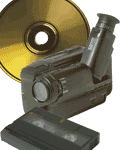
"Camcorders became smaller with the invention of 8mm
video tape. . ."
|
Turn Your Old Tapes Into Digital Video - Click Here Now!
|